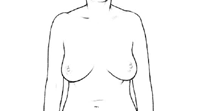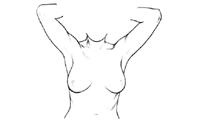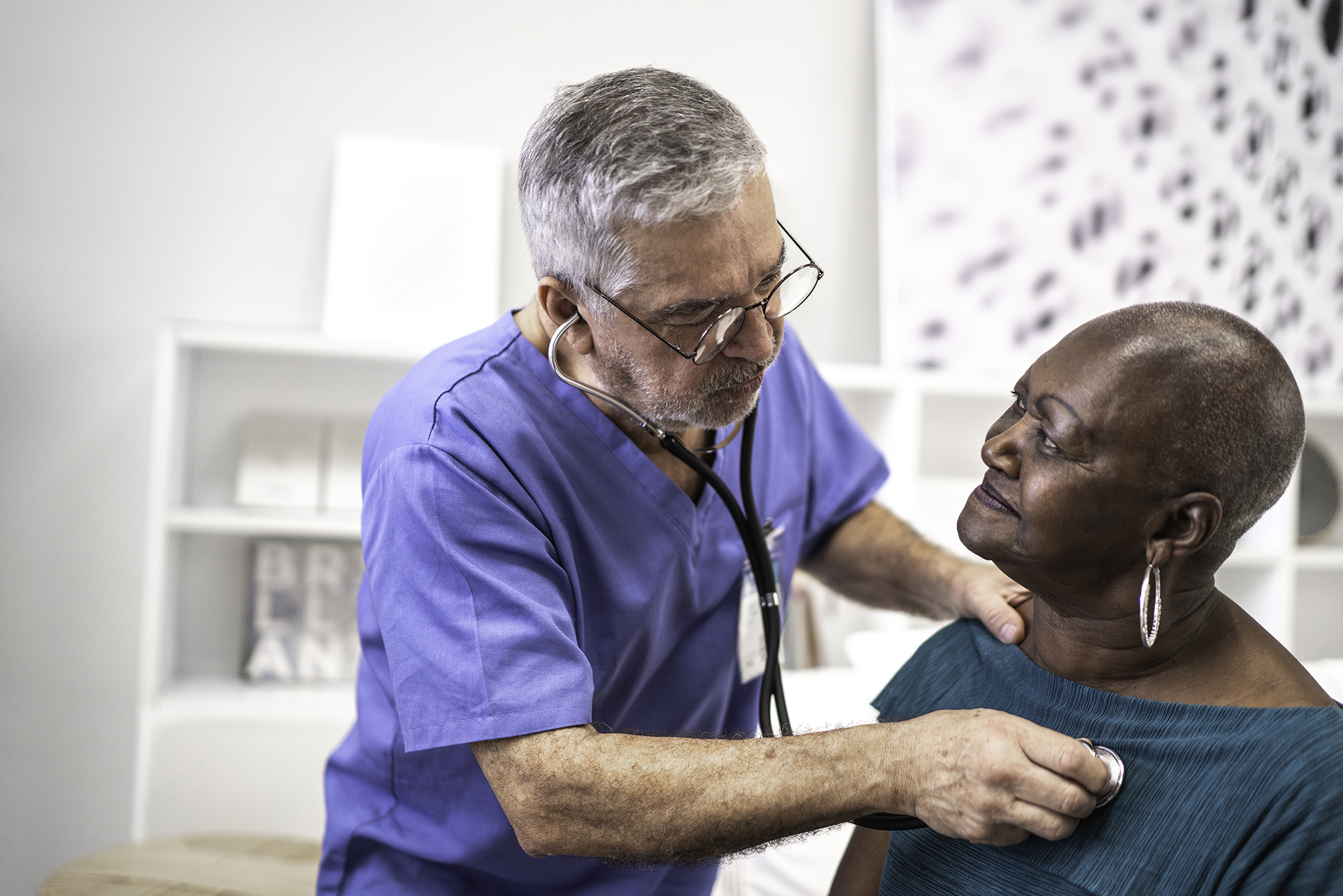How to do breast self-examination
1. Stand in front of a mirror that is large enough for you to see your breasts clearly. Check each breast for anything unusual. Check the skin for puckering, dimpling or scaling. Look for a discharge from the nipples that comes out on its own (discharge that comes out only when pressure is applied to the nipple can be normal).

2. Watching closely in the mirror, clasp your hands behind your head and press your hands forward.

3. Next, press your hands firmly on your hips and bend slightly toward the mirror as you pull your shoulders and elbows forward.

Do steps 2 and 3 to check for any change in the shape or contour of your breasts. As you do these steps, you should feel your chest muscles tighten.
4. Raise one arm. Use the pads of the fingers of your other hand to check the breast and the surrounding area firmly, carefully and thoroughly. Some women like to use lotion or powder to help their fingers glide easily over the skin. Feel for any unusual lump or mass under the skin. Feel the tissue by pressing your fingers in small, overlapping areas about the size of a dime. To be sure you cover your whole breast, take your time and follow a definite pattern: lines, circles or wedges.

Some research suggests that many women do breast self-examination more thoroughly when they use a pattern of up-and-down lines or strips. Other women feel more comfortable with another pattern. The important thing is to cover the whole breast and to pay special attention to the area between the breast and the underarm, including the underarm itself. Check the area above the breast, up to the collarbone and all the way over to your shoulder.
Lines: Start in the underarm area and move your fingers downward little by little until they are below the breast. Then move your fingers slightly toward the middle and slowly move back up. Go up and down until you cover the whole area.
Circles: Beginning at the outer edge of your breast, move your fingers slowly around the whole breast in a circle. Move around the breast in smaller and smaller circles, gradually working toward the nipple. Don't forget to check the underarm and upper chest areas, too.
Wedges: Starting at the outer edge of the breast, move your fingers toward the nipple and back to the edge. Check your whole breast, covering one small wedge-shaped section at a time. Be sure to check the underarm area and the upper chest.
5. It is important to repeat step 4 while you are lying down. Lie flat on your back, with one arm over your head and a pillow or folded towel under the shoulder. This position flattens the breast and makes it easier to check. Check each breast and the area around it very carefully using one of the patterns described above.

6. Some women repeat step 4 in the shower. Your fingers will glide easily over soapy skin, so you can concentrate on feeling for changes underneath.
What do you do if you find a lump?
One of the most frightening moments for a woman is if she feels something different or unusual while performing breast self-examination. One of the most important reasons to perform regular breast self-examination is so that you know what is normal for your breasts. If you find a lump, it is important not to panic.
If you discover a lump in one breast or feel something “different” in the tissue, examine the same spot in the opposite breast. Usually, if the same area in the opposite breast feels the same, there is little need for worry. Sometimes, the lumpiness may be due to hormonal or menstrual changes. However, if they feel different, or you feel a definite lump, if you notice skin changes such as dimpling or puckering, or nipple discharge that leaks out on its own, contact your physician as there may be valid reason for concern. They may recommend diagnostic imaging.
It is natural to be frightened when discovering a lump, but do not let the prospect of cancer delay you from taking action. Remember that 80 percent of all breast lumps are benign (noncancerous), the result of hormones or fibrocystic changes.


